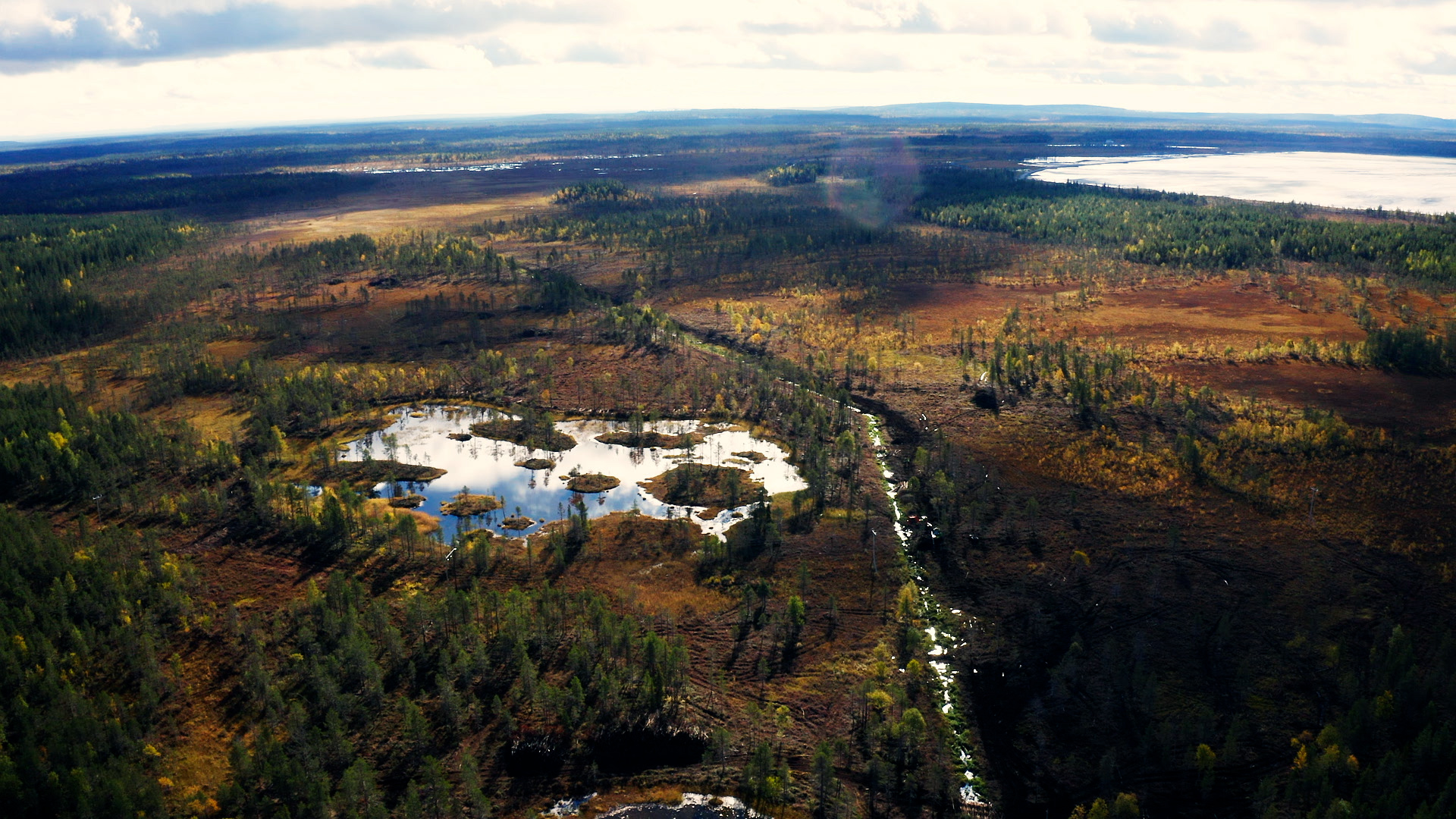We Are Recreating Habitats and Developing New Methods
28 August 2025, 10:00 CET

For several years, Sweden’s largest wetland restoration project has been underway in Pajala Municipality. Near Kaunis Iron’s open-pit mine in Kaunisvaara, forest land is being restored back into wetlands—land that was previously drained to become forest. Now, Kaunis Iron is instead damming the land and removing the trees. In total, an astounding 826 hectares are being restored into wetlands and veteranized forest.
Lars Wallgren, Environmental and Sustainability Strategist at Kaunis Iron, explains:
“Why are we doing this, one might wonder. The answer has two parts. Partly, we are compensating for the land we’ve already utilized and the areas affected by our operations. That includes land surrounding the industrial area. Partly, it's also pre-emptive compensation for the land we will impact when opening new deposits outside the current mining area.”
The work is carried out in collaboration with professional biologists and the County Administrative Board, which acts as the supervisory authority. The biologists develop the action plans together with us at Kaunis Iron, which are then approved and finally inspected by the County Board once completed. Given the market situation and the prolonged permitting process, we are now more clearly linking the work to the timeline for the expansion of mining operations. The restorations are still carried out in advance, one to three years before project activities begin, but now at a pace that follows the project’s development and ensures that we are ready when the next step is taken.
These are identified natural values, focusing on both flora and fauna, with key species identified—such as the Eurasian curlew, woodpeckers, and various types of orchids. In the areas surrounding the mine, restoration efforts are ongoing specifically to benefit species like the lesser spotted woodpecker and the three-toed woodpecker.
“We are creating forest environments with dead trees, where they can find the right kind of food,” says Wallgren.
In our environmental work, we ring-bark trees, simulate lightning strikes, and conduct controlled burns—all to create a forest environment that woodpeckers and other species thrive in. Similarly, we create open fields in parts of the land for the curlew to nest, where it can spot predators like foxes in time. Throughout the process, we also assess how to reduce noise and avoid disturbance during the nesting season—all based on the precautionary principle.
The focus here is on biodiversity. But yes, wetlands are also known to be beneficial for carbon capture.
“We are restoring old drained wetlands and recreating habitats,” says Wallgren.
For example, we’ve transplanted orchids from the sand storage area to one of the restored wetlands north of the mine. Before converting forest land into wetland, the trees are removed. The timber goes to sawmills, pulpwood to the paper industry, and branches are chipped for heating plants. But the material is also reused in a circular manner in the damming work. Jyrki Vaattovaara, field technician and wetland restoration specialist, explains:
“We use what I call the ‘beaver method.’ We use as much of the natural material available in the area as possible to dam up the water.”
The work involves collecting logs, branches, treetops, peat, soil, and stones. It’s most effective to use what’s left over from tree felling. The goal is to make the process circular and avoid unnecessary transport of materials to the dams.
The project has also partially evolved into a testbed for new methods.
“We start from already proven techniques and develop them as we go along—so there’s an element of research in what we do.”
The same method doesn’t work everywhere, so often, site-specific solutions are needed. Always as sustainably as possible. For example, brushwood beds are used on forest roads to protect the ground where heavy machinery operates.
We want to preserve nature as much as we can, concludes Jyrki Vaattovaara.
Read more about our environmental work in our Environmental Report https://www.kaunisiron.se/en/residents/environmental-reports/